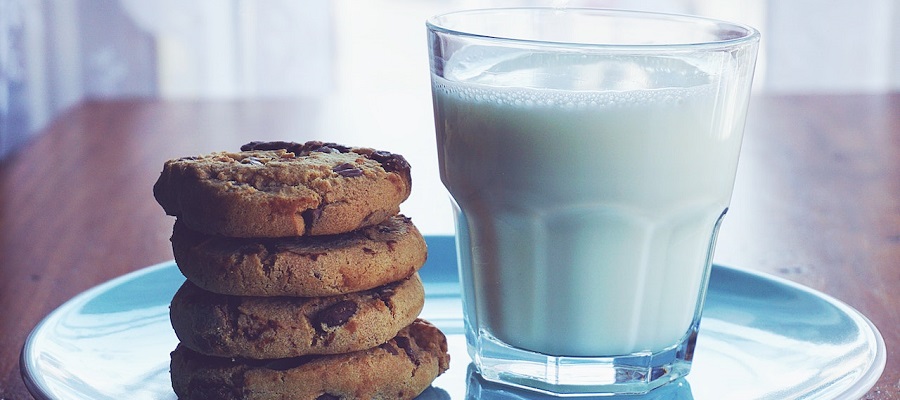Full-fat milk is milk that contains the full amount of fat that is naturally present in cow's milk. This type of milk is often referred to as whole milk. Skim milk, on the other hand, is milk that has had most of the fat removed. It is also called fat-free or nonfat milk.
Both types of milk are rich in nutrients, but they differ in their fat and calorie content. Full-fat milk contains about 3.5% fat and 150 calories per cup (240 mL), while skim milk contains less than 0.5% fat and about 80 calories per cup.
The type of milk you choose will depend on your personal preference and nutritional needs. If you are looking to reduce your intake of saturated fat and calories, skim milk may be a good option. However, if you are trying to gain weight or need the extra calories and fat for physical activity or muscle building, full-fat milk may be a better choice. It's important to keep in mind that all types of milk can be part of a healthy diet when consumed in moderation as part of a balanced diet.
What is the difference between goat's milk, cow's milk, and buffalo's milk?
Goat's milk, cow's milk, and buffalo's milk are all types of animal milk that are consumed by people around the world. While all three types of milk are nutritious and contain similar amounts of protein, fat, and carbohydrates, they do have some differences in their nutrient profiles.
Here is a brief overview of the main differences between goat's milk, cow's milk, and buffalo's milk:
Goat's milk: Goat's milk has a slightly different composition compared to cow's milk. It is higher in calcium, vitamin A, and niacin, and lower in folic acid and vitamin B12. It also contains less lactose (milk sugar) than cow's milk, making it easier to digest for some people who are lactose intolerant. Goat's milk has a distinct flavor that is often described as "goaty" or "earthy," which some people find appealing while others do not.
Cow's milk: Cow's milk is the most widely consumed type of milk in the world. It is a good source of protein, calcium, and other essential nutrients. Cow's milk comes in several different fat levels, including whole, 2%, 1%, and skim (fat-free). The fat content of cow's milk varies from 3.5% in whole milk to less than 0.5% in skim milk.
Buffalo's milk: Buffalo's milk is similar to cow's milk in terms of its nutrient content, but it has a higher fat and protein content. It is also higher in calcium and vitamin A. Buffalo's milk has a richer, creamier texture and a slightly sweeter taste compared to cow's milk. It is often used to make dairy products like cheese and yogurt.
Overall, the type of milk you choose will depend on your personal preference and nutritional needs. All three types of milk can be part of a healthy diet when consumed in moderation as part of a balanced diet.
What are the benefits of drinking milk on an empty stomach in the morning and right before bed?
Drinking milk on an empty stomach in the morning and before bedtime may provide some health benefits, but it's also important to consider the potential drawbacks and how it fits into your overall diet and lifestyle.
Here are some potential benefits of drinking milk on an empty stomach in the morning and before bedtime:
Morning: Some people believe that drinking milk on an empty stomach in the morning can help boost energy and improve digestion. Milk is a good source of protein and carbohydrates, which can provide a sustained energy boost and help keep you feeling full until lunchtime. It also contains beneficial bacteria called probiotics, which may help support gut health and improve digestion.
Before bedtime: Some people believe that drinking milk before bedtime can help promote sleep and relaxation. Milk contains tryptophan, an amino acid that is converted into the hormone serotonin, which helps regulate sleep. It also contains calcium, which may help relax the nervous system and promote sleep.
However, it's important to note that there is limited scientific evidence to support these claims. Additionally, drinking milk on an empty stomach in the morning or before bedtime may cause gastrointestinal discomfort for some people, especially if they are lactose intolerant or have sensitivities to dairy products.
It's also important to consider how drinking milk on an empty stomach fits into your overall diet and lifestyle. If you are trying to reduce your intake of saturated fat and calories, low-fat or skim milk may be a better choice. It's also important to consider the other sources of protein, calcium, and other nutrients in your diet.
Overall, it's important to listen to your body and choose foods and beverages that make you feel good and support your overall health and well-being.
What are the most famous international brands for selling milk?
There are many international brands that sell milk and dairy products around the world. Some of the most well-known brands include:
Nestle: Nestle is a multinational food and beverage company based in Switzerland. It is one of the largest producers of milk and dairy products in the world, with a wide range of products including milk, yogurt, cheese, and butter.
Danone: Danone is a French multinational food and beverage company that specializes in dairy products. It is one of the largest producers of dairy products in the world, with a wide range of products including milk, yogurt, cheese, and ice cream.
Fonterra: Fonterra is a New Zealand-based dairy cooperative that is one of the largest producers of milk and dairy products in the world. It sells a wide range of products including milk, cheese, butter, and yogurt.
Amul: Amul is an Indian dairy cooperative that is one of the largest producers of milk and dairy products in India. It sells a wide range of products including milk, cheese, butter, and yogurt.
Arla: Arla is a Danish-Swedish dairy cooperative that is one of the largest producers of milk and dairy products in Europe. It sells a wide range of products including milk, cheese, butter, and yogurt.
These are just a few examples of the many international brands that sell milk and dairy products around the world. There are also many smaller, local brands that produce and sell high-quality milk and dairy products in various regions.


